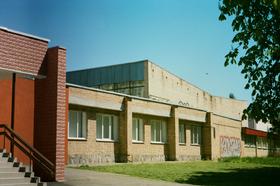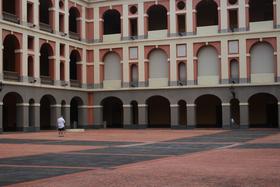For the 2025-26 school year, there are 5 public elementary schools serving 1,754 students in Centralia School District. This district's average elementary testing ranking is 2/10, which is in the bottom 50% of public elementary schools in Washington.
Public Elementary Schools in Centralia School District have an average math proficiency score of 28% (versus the Washington public elementary school average of 43%), and reading proficiency score of 29% (versus the 51% statewide average).
Minority enrollment is 48% of the student body (majority Hispanic), which is less than the Washington public elementary school average of 52% (majority Hispanic).
Overview
This School District
This State (WA)
# Schools
9 Schools
1,833 Schools
# Students
3,374 Students
740,174 Students
# Teachers
208 Teachers
44,879 Teachers
Student-Teacher Ratio
16:1
16:1
Student By Grade
District Rank
Centralia School District, which is ranked within the bottom 50% of all 306 school districts in Washington (based off of combined math and reading proficiency testing data) for the 2022-2023 school year.
The school district's graduation rate of 81% has increased from 75% over five school years.
Overall District Rank
#254 out of 307 school districts
(Bottom 50%)
(Bottom 50%)
Math Test Scores (% Proficient)
25%
41%
Reading/Language Arts Test Scores (% Proficient)
36%
53%
Science Test Scores (% Proficient)
32%
49%
Graduation Rate
81%
84%
Students by Ethnicity:
Diversity Score
0.58
0.69
% American Indian
1%
1%
% Asian
1%
9%
% Hispanic
41%
26%
% Black
1%
5%
% White
51%
48%
% Hawaiian
n/a
2%
% Two or more races
5%
9%
All Ethnic Groups
District Revenue and Spending
The revenue/student of $16,289 in this school district is less than the state median of $18,796. The school district revenue/student has stayed relatively flat over four school years.
The school district's spending/student of $15,412 is less than the state median of $19,247. The school district spending/student has stayed relatively flat over four school years.
Total Revenue
$55 MM
$20,715 MM
Spending
$52 MM
$21,212 MM
Revenue / Student
$16,289
$18,796
Spending / Student
$15,412
$19,247
Best Centralia School District Public Elementary Schools (2025-26)
School
(Math and Reading Proficiency)
(Math and Reading Proficiency)
Location
Quick Facts
Rank: #11.
Edison Elementary School
(Math: 35-39% | Reading: 40-44%)
Rank:
Rank:
4/
Bottom 50%10
607 H Street
Centralia, WA 98531
(360) 330-7631
Centralia, WA 98531
(360) 330-7631
Gr: K-6 | 289 students Student-teacher ratio: 14:1 Minority enrollment: 45%
Rank: #22.
Fords Prairie Elementary School
(Math: 34% | Reading: 27%)
Rank:
Rank:
2/
Bottom 50%10
1620 Harrison Avenue
Centralia, WA 98531
(360) 330-7633
Centralia, WA 98531
(360) 330-7633
Gr: K-6 | 444 students Student-teacher ratio: 14:1 Minority enrollment: 47%
Rank: #33.
Washington Elementary School
(Math: 30-34% | Reading: 28%)
Rank:
Rank:
2/
Bottom 50%10
800 Field Street
Centralia, WA 98531
(360) 330-7641
Centralia, WA 98531
(360) 330-7641
Gr: K-6 | 286 students Student-teacher ratio: 14:1 Minority enrollment: 45%
Rank: #44.
Oakview Elementary School
(Math: 20-24% | Reading: 30%)
Rank:
Rank:
2/
Bottom 50%10
201 Oakview Avenue
Centralia, WA 98531
(360) 330-7638
Centralia, WA 98531
(360) 330-7638
Gr: K-6 | 343 students Student-teacher ratio: 14:1 Minority enrollment: 49%
Rank: #55.
Jefferson Lincoln Elementary School
(Math: 18% | Reading: 21%)
Rank:
Rank:
1/
Bottom 50%10
400 West Summa
Centralia, WA 98531
(360) 330-7636
Centralia, WA 98531
(360) 330-7636
Gr: K-6 | 392 students Student-teacher ratio: 13:1 Minority enrollment: 55%
Recent Articles

Texas Schools Enrollment Trends & Policy in 2025
Latest data and policy changes on Texas public school enrollment growth, funding, and virtual education in 2025.

Financial Aid & Hidden Costs in Public Schools
Learn about financial aid and hidden costs in public schools. Discover what parents should budget for beyond tuition-free education.

NYC Schools Still Most Segregated in 2025
Despite reforms, New York City schools remain the most segregated in the U.S. in 2025. Here鈥檚 what parents and educators need to know.





